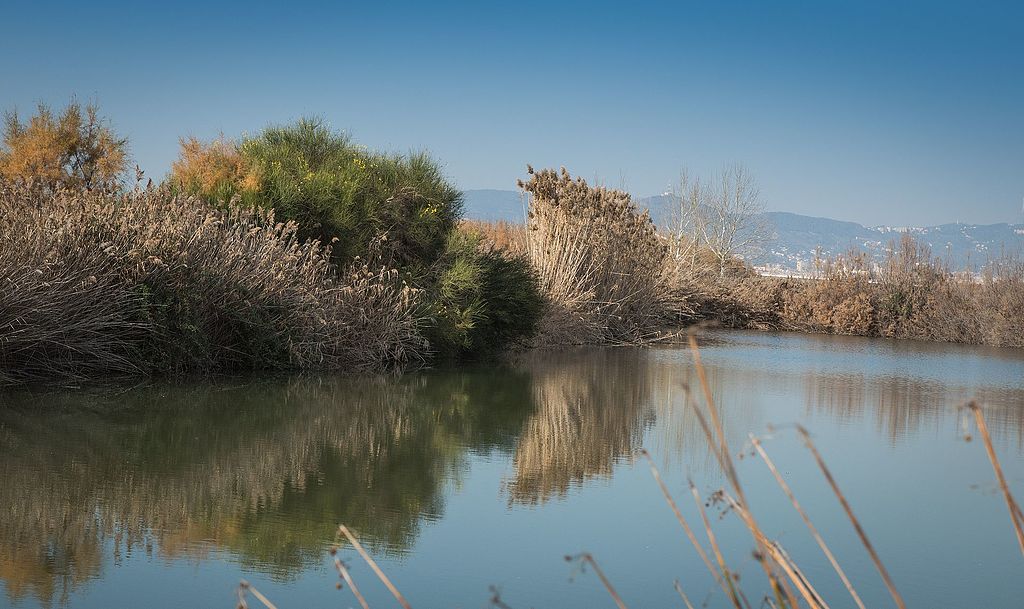Connecting land and coastal water research with the AquaINFRA project
In order to achieve the goals of the European Union in terms of ocean and water restoration by 2030, it is necessary to connect all the components of the water cycle. The AquaINFRA project, with the support of the European Open Science Cloud (EOSC), will develop an interaction platform for open, multidisciplinary and FAIR (findable, accessible, interoperable and reusable) data and services so that science and the actors involved can restore both the health of the seas and coastal waters, as well as inland waters (surface and groundwater). This innovative API aims to integrate the terrestrial part of the water cycle with the marine part, two areas that are usually disconected since their scientific communities and models are also separated.
A unique hydrosphere
AquaINFRA aims to create a space where all the scientific communities in the aquatic field interact to work and collaborate under a "unique hydrosphere".
AquaINFRA aims to turn this new platform, hosted by the EOSC, into a space where all the scientific communities in the aquatic field, both marine and freshwater communities, interact to work and collaborate mutually under what could be called a "single hydrosphere". In this sense, the EOSC provides a suitable framework to demonstrate that the union of the two aquatic worlds can drive, on the one hand, the discovery and data processing in an integrated manner through a single interface and to improve, on the other hand, the models, the sharing and the reuse of results of public research between scientists, authorities, citizens and industry.
For this purpose, a cross-domain and cross-country search and discovery mechanism will be developed, as well as the creation of services for spatio-temporal analysis and modeling through Virtual Research Environments (VRE). AquaINFRA's VREs enable interested parties to store, share, access, analyze and process research data from their own discipline, as well as from other research specialties and infrastructures across national borders.

Co-design and collaboration
The services will be tested and co-designed with users in a set of use cases in the Baltic Sea, the North Sea and the Mediterranean Sea, as well as on a pan-European level. CREAF will lead the actions in the Mediterranean area, specifically in three sub-regions: Delta del Llobregat, Maresme/Tordera and Malta. Researchers Lluís Pesquer and Ester Prat explain that in this case study they want to demonstrate that the connection of hydrological and coastal models and the integration of in-situ and remote sensing data improve the models. On the other hand, CREAF participates in the design of the EOSC platform to ensure that its services are interoperable and its data follow the FAIR principles, a task carried out by Kaori Otsu and Joan Masó, CREAF researchers.
The AquaINFRA project will develop use cases in the Baltic Sea, the North Sea, the Mediterranean Sea and one at the pan-European area.
The AquaINFRA project will be carried out in close collaboration with its sister project BlueCloud26, both funded by the European Commission with the aim of developing the EOSC, the EU's flagship initiative to enable open science practices in Europe. Both projects will demonstrate the interaction between the EOSC data space and the European Green Deal data space and will act as EOSC models for the so-called "blue research". In addition, it will also collaborate with other pioneering projects such as ILIAD i EDITO Digital Twins of the Ocean.
The launch of AquaINFRA took place in Copenhagen (Denmark) between the 14th and 16th of February 2023 and brought together the international consortium of 21 partners, led by the Aalborg University (Denmark). Also part of this consortium are 52 North Spatial Information Research GmbH (Germany), Blue Lobster IT Limited (Wales, UK), CREAF (Spain), CSC - Tietten tietotekniikan keskus Oy (Finland), Deutsche Klimarechenzentrum (Germany), Eesti Mereinstituut (Estonia), HELCOM (Finland), Helmholtz-Zentrum Hereon (Germany),Hochshule Bochum (Germany),Institut de Ciències del Mar - CSIC (Spain), Karlsruher Institut für Technologie (Germany), L-Università ta' Malta (Malta), Latvijas Hidroekoloǧijas institūts (Letònia), Leibniz-Institut für Gewässerökologie und Binnenfischerei, FVB-IGB (Germany), Maanmittauslaitos (Finland), el Norsk institutt fur vannforskning (Norway), SINTEF AS (Norway), Suomen ympäristökeskus (Finland), Technische Universität Dresden (Germany) and the Universität für Bodenkultur Wien (Austria).
More information







